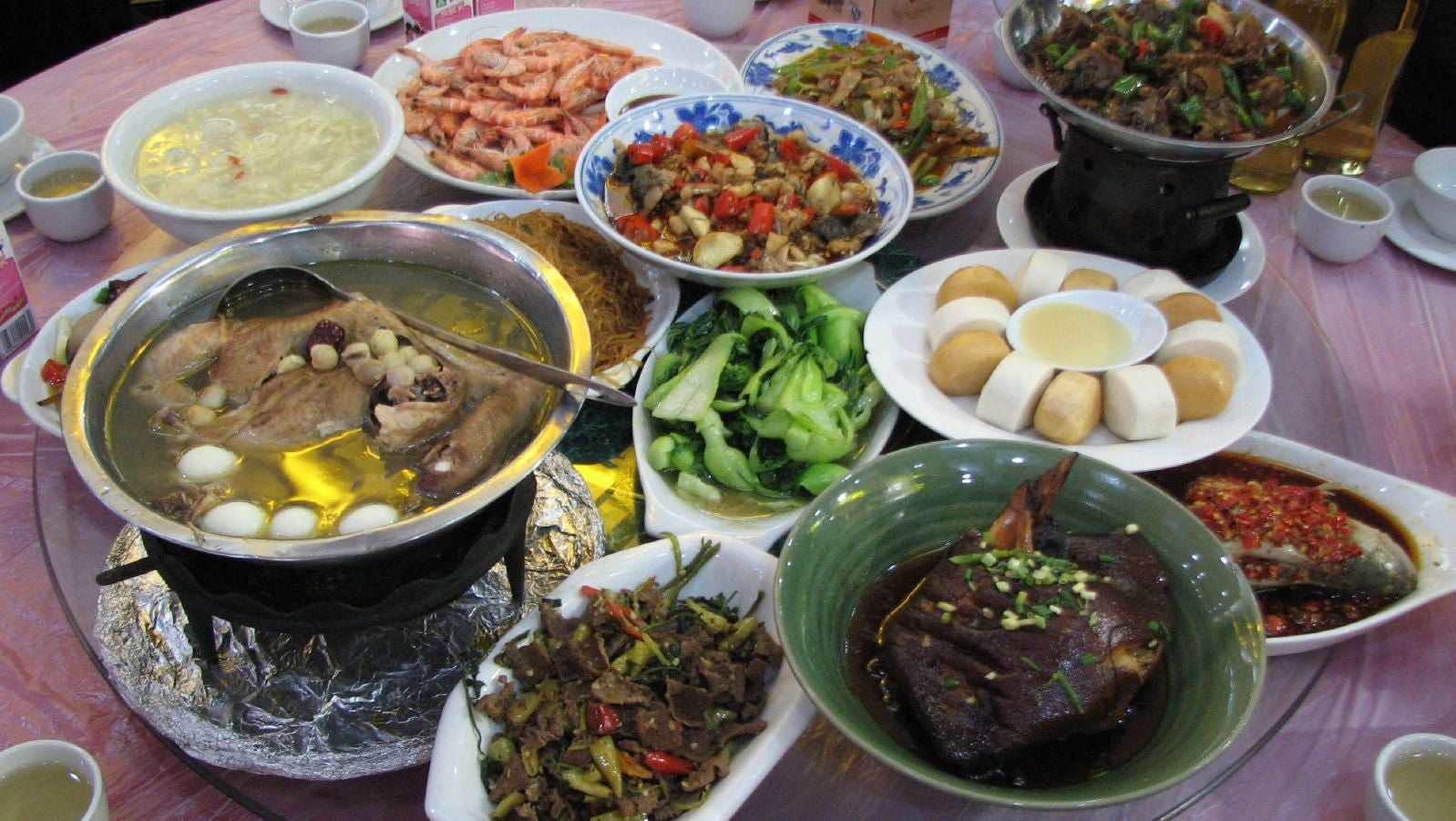I used to be ashamed of my family’s smelly Asian cooking—now it fills me with pride
Growing up in my suburban Georgia community, some of my friends had outdoor patios, others game rooms or swimming pools. My parents, much to my constant embarrassment, built an outdoor cooking area.


Growing up in my suburban Georgia community, some of my friends had outdoor patios, others game rooms or swimming pools. My parents, much to my constant embarrassment, built an outdoor cooking area.
In my Vietnamese-Chinese family’s earlier years in America, when we were renting, our outside kitchen would usually consist of a cooking structure fired by propane gas. Every night, my dad would squat by the makeshift design stirring whatever delicious concoction we were having for dinner, usually in a wok or a clay pot.
Years later, when we bought our first home, my parents turned the back deck into an outside kitchen and our little cooking area was upgraded with a stove, refrigerator, exhaust fan, vinyl floors; it even had a table for casual meals. In fact, our outside kitchen looked a lot like the indoor one. The difference? Our outside kitchen was reserved for the smelliest types of cooking.
Indeed, my favorite dishes from back then included ca chien sot ca—fried fish with tomato sauce and drenched with garlic fish (yes, more fish!) sauce. I delighted in ca kho to—braised fish simmered with caramel sauce with tons of shallots, peppers, and garlic cooked in a clay pot. To this day I can’t stop salivating every time bo kho is on the stove (a rich, hearty beef stew slow-cooked for hours with gelatin-rich beef stock, aromatic spices, potatoes, carrots, lime juice, and fresh herbs.) Every morning (and on cold nights), my Chinese grandfather would make a generous pot of congee and we’d eat the piping hot rice porridge with fermented bean curd, pickled preserves, and century eggs. And then there’s bun bo hue, a brothy noodle stew cooked with tender brisket, lemongrass, basil, shallots, and fresh herbs exploding with so much flavor, you’ll find yourself literally crying into your bowl as you eat it because it’s just so spicy, hot, and delicious.
As you can imagine, these dishes didn’t come without a price—the lingering smells that cling to every fiber of your being until it seeps into your pores. Today, when I tell friends from immigrant families about our outside kitchens, they applaud my parent’s practicality while cringing at the memory of their own childhood homes permeated with smelly “ethnic” foods. Every time I smell rau ram, I’m transported back to that outside space as my dad pierced the membranes of fertilized duck eggs, handing them to me so I could sip the amniotic fluid juices. “It’s very nourishing,” he would say, and in my head I would reply, “Never tell anyone I eat this or you’re dead.” Based on my family’s eating habits, I had zero friends over for dinner growing up.
It took a lot of growing up before I could appreciate our outside kitchen, which served for years as a constant, malodorous reminder that my family didn’t eat what “normal” American families ate. We were different: What we put in our bodies was different, and what kept us alive was different. And during those crucial years when all you want in the world is to fit in, being so discernibly, embarrassingly separate took an emotional toll.
All of which is to say that when Ruth Tam wrote in The Washington Post about what it’s like to have your family’s ethnic food go from “Chinese grossness” to America’s “hottest food trend,” I cheered her on from behind my computer screen. I wish I had spent less time worrying about how my dad’s delicacies would appear to my high-school friends and more time appreciating this delicious emotional bridge my parents were creating, connecting our table in southern USA with the tables of their parents on far-flung continents.
Instead, the food I grew up with left such a bad taste in my mouth that I rarely ate my family’s cooking as a teenager. I had lost my taste for the dishes brought thousands of miles in by my parents as they journey—on a boat, as refugees—from Southeast Asia. Thinking about it now still breaks my heart.
Sometime in college my attitude towards my family recipes began to shift and I began to crave once again the garlic, shallots, and fresh herbs aroma that once filled my parent’s kitchens. When my Chinese grandfather passed away in 2010, I knew no one else could cook me a bowl of congee the way he had. Suddenly, those smells I was once so ashamed of represented the hard work of my tight-knit family, the hours spent in kitchens—both inside and out—and the love they spread on thick alongside steaming helpings of noodle soup and rice porridge.
I’m grateful that as an adult living in New York I have found a community of friends who don’t wrinkle their noses when I get a craving for smelly foods. Somehow, I’ve also managed to find a partner from a completely different culture who will gladly share the table with me. People even ask me for recommendations and invites.
As Tam puts it, “Chinese grossness” lives mostly in the past, an antiquated reminder of old school prejudices overtaken by the trendy glow of modern Asian hot spots. I now feel intense pride for the kinds of foods that once caused me so much shame. But in following my taste buds it seems I was also able to reclaim a part of me I didn’t fully realize was lost. Luckily for me, as long as there are steaming (and yes, sometimes lightly stinking) dinner tables and friends all too willing to crowd around with an empty bowl or two, I’m never really that far from home.